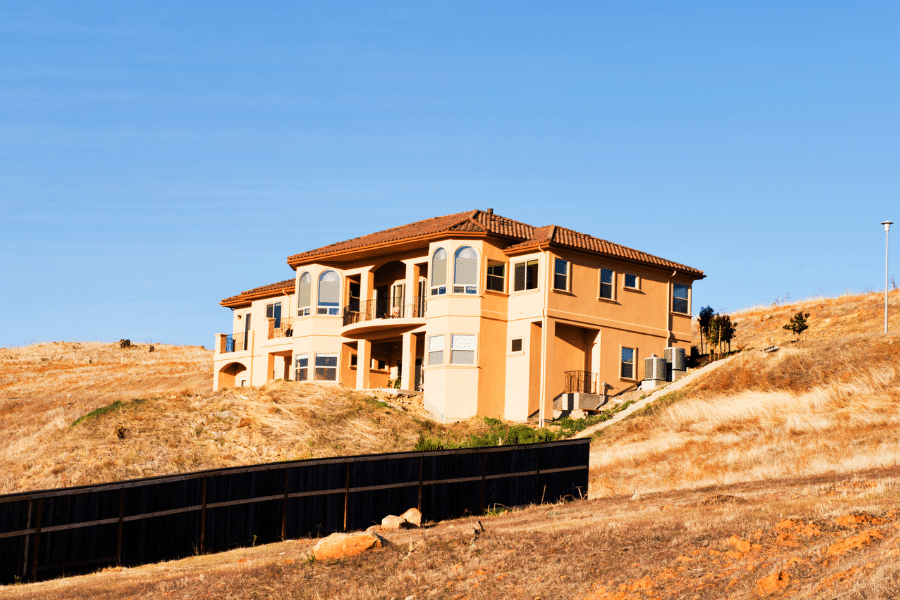The Perfect Storm: Factors Contributing to the Crisis
- Increasing frequency and severity of wildfires, leading to a surge in insurance claims and financial strain on insurers.
- Rising construction costs due to inflation, supply chain disruptions, and labor shortages, resulting in higher rebuild costs and premiums.
- Regulatory factors, particularly Proposition 103, which limits insurers’ ability to adjust rates to reflect current risks.
These interconnected factors create a challenging environment for both insurers and homeowners, making it essential for individuals to stay informed and proactive in managing their insurance needs.
The Impact on Homeowners

Higher Premiums
For homeowners, the most immediate and painful impact of the insurance crisis is the dramatic increase in premiums. The costs associated with insuring a home in California, particularly in high-risk wildfire areas, have soared. Many major insurers have received approval to raise their rates significantly, with increases of up to 20% upon renewal being reported. These hikes reflect the increased risk and higher costs faced by insurers (Zebra Insurance Quotes).
Limited Coverage Options
Securing adequate insurance coverage has become increasingly difficult, especially for those living in areas prone to wildfires. With many insurers pulling out of high-risk markets, homeowners are left with fewer options. The California FAIR Plan, designed as a last-resort insurance option, has seen a substantial increase in policies as more homeowners turn to it when private insurers refuse coverage (Policygenius).
Significant Financial Risk
The lack of adequate insurance coverage exposes homeowners to considerable financial risk. Without sufficient insurance, the cost of rebuilding or repairing homes after a disaster can be devastating. This financial burden can lead to severe economic hardship, highlighting the critical need for comprehensive and affordable insurance solutions (Post Insurance).
Regulatory and Legislative Factors

Proposition 103
One of the key regulatory factors influencing the California home insurance market is Proposition 103. Enacted in 1988, this law requires insurance companies to seek approval from the state for any rate increases. These increases must be justified based on the insurer’s average annual wildfire losses over the past 20 years. This regulation has become increasingly challenging for insurers to navigate, given the recent exponential rise in wildfire-related losses. Proposition 103 effectively limits the ability of insurers to adjust rates to match current risks, contributing to their financial strain and prompting some to withdraw from high-risk areas.
New Consumer Protections
Recent legislative measures have been introduced to enhance consumer protections and address the challenges posed by the insurance crisis. Laws like SB 1040 and SB 1242 focus on preventing insurance fraud and unauthorized sales. SB 1040 empowers the Insurance Commissioner to take action against those selling insurance without proper authorization, while SB 1242 mandates better training for insurance agents and brokers in spotting and reporting fraud. These laws aim to protect consumers and ensure that insurance agents are well-equipped to handle the complexities of the current market.
Moratoriums on Policy Cancellations
In response to the surge in non-renewals, the California Department of Insurance has issued multiple moratoriums since 2019. These moratoriums temporarily bar insurers from canceling or non-renewing policies in wildfire-adjacent areas for up to one year. While well-intentioned, these measures do not address the underlying financial challenges faced by insurers, making them a temporary rather solution.
The FAIR Plan and Market Dynamics

The California FAIR Plan
As private insurers continue to withdraw from high-risk markets, the California FAIR Plan has become a crucial safety net for homeowners. The FAIR Plan is designed as a last-resort insurance option providing basic fire insurance coverage to those who cannot obtain it from the private market. Since the onset of the insurance crisis, there has been a significant increase in policies under the FAIR Plan. This reflects the difficulties homeowners face in securing private coverage.
Challenges with the FAIR Plan
While the FAIR Plan provides essential coverage, it has its limitations. It offers only basic fire insurance, which may not be sufficient for all homeowners’ needs. Those covered under the FAIR Plan often need to purchase additional insurance to cover other perils which can increase their overall insurance costs. Moreover, the FAIR Plan premiums are typically higher than those for private insurance, adding financial strain to homeowners already dealing with high living costs).
These market dynamics highlight the ongoing struggle between providing adequate coverage for homeowners and maintaining a viable insurance market in California. Understanding these factors can help homeowners navigate the complex landscape of insurance options available to them.
Protecting Your Home: Steps Homeowners Can Take

Shop Around for Insurance
One of the most effective strategies for homeowners is to shop around and compare policies from different insurance providers. Given the variability in coverage options and premiums, it takes time to research and compare subsequent coverage and rates. Homeowners should also consider agencies that specialize in high-risk areas to ensure they are adequately protected.
Mitigate Risks
Implementing fire-resistant measures can significantly impact both the insurability and safety of a home. Start by creating defensible space by clearing vegetation around the property. In addition, use fire-resistant materials in construction. Lastly, adhere to local fire safety regulations can make a home more attractive to insurers. These proactive steps not only reduce the risk of wildfire damage but may also lead to lower insurance premiums.
Explore State Programs
For homeowners struggling to find private insurance, state-backed programs like the California FAIR Plan offer a viable alternative. While these plans provide essential coverage, it’s crucial to understand their limitations and consider supplementary policies to ensure comprehensive protection.
Interview Insurance Agencies
Its critical to choose the right insurance company in a volatile market. Homeowners should ask detailed questions about the agency’s experience with high-risk areas, including their claims process, and how they determine coverage levels. Understanding these factors can help in selecting an agency that aligns with your specific needs and offers robust support during the claims process.
These steps can help homeowners navigate the challenging insurance landscape in California. This ensures they secure the necessary coverage to protect their homes and financial well-being.
Seeking Solutions: Potential Reforms and Innovations

Sustainable Insurance Strategy
In response to the ongoing crisis, California has rolled out its Sustainable Insurance Strategy for 2024. This plan aims to decrease the number of homeowners relying on the FAIR Plan by expanding the availability of insurance options across the state. The strategy focuses on creating a more resilient insurance market that can better absorb the risks associated with wildfires and other natural disasters.
Innovative Insurance Products
Innovative insurance products tailored to California’s unique risks are emerging as potential solutions. These products include parametric insurance, which provides payouts based on predefined events like the occurrence of a wildfire, rather than the traditional claims process. Such innovations can offer quicker and more predictable payouts, helping homeowners recover faster from disasters.
Increased Government Support
Enhanced government support for mitigation measures is critical. Programs that provide financial assistance for homeowners to implement fire-resistant measures can reduce the overall risk and make properties more insurable. Increased investment in community-wide fire prevention and infrastructure improvements can also play a significant role in stabilizing the insurance market.
By pursuing these reforms and innovations, California aims to create a more sustainable and accessible insurance landscape that better protects homeowners from the growing risks posed by climate change and other factors.
Enhancing Property Resilience to Wildfires

Creating Defensible Space
One of the most effective measures homeowners can take to protect their property from wildfires is to create defensible space. This involves clearing vegetation, debris, and other flammable materials from around the home to create a buffer zone that can slow the spread of fire. Implementing a defensible space not only enhances safety but can also make a property more insurable and potentially benefit from lower insurance premiums.
Using Fire-Resistant Materials
Utilizing fire-resistant materials in the construction and renovation of homes is another critical step. This can include using non-combustible roofing materials, fire-resistant siding, and installing ember-resistant vents. These measures significantly reduce the risk of fire damage, providing both immediate protection and long-term benefits in terms of insurability and safety.
Adhering to Fire Safety Regulations
Compliance with local fire safety regulations is essential. Homeowners should stay informed about the latest building codes and fire safety guidelines in their area. Adhering to these regulations not only improves the resilience of the property but also ensures that homeowners meet the requirements for obtaining and maintaining insurance coverage.
Community-Wide Efforts
Community-wide fire prevention initiatives can also play a crucial role. Homeowners can participate in local fire safety programs, such as neighborhood fire prevention groups or community-wide defensible space projects. These programs can enhance overall safety and resilience. These collective efforts contribute to reducing the risk for the entire area. This benefits all residents and potentially leads to more favorable insurance conditions.
Enhancing property resilience through these measures can significantly mitigate the risks associated with wildfires which makes homes safer and more insurable.
Future Outlook for California’s Insurance Market

Market Trends and Anticipated Changes
The California home insurance market is in a state of flux, adapting to the new reality of more frequent and severe wildfires. Industry experts predict that insurance premiums will continue to rise as insurers adjust to the heightened risks associated with climate change. However, these increases may be accompanied by the introduction of more innovative insurance products designed to better address the specific challenges faced by California homeowners.
Regulatory Changes
Future regulatory adjustments, particularly concerning Proposition 103, are likely to play a significant role in shaping the market. Reforms aimed at allowing more flexibility in setting rates to reflect current risks could help stabilize the market. These changes would need to balance the needs of both insurers and consumers, ensuring that homeowners have access to affordable and adequate coverage while allowing insurers to remain financially viable.
Collaboration Between Stakeholders
The path to a more stable and accessible insurance market will require collaboration between regulators, insurers, and communities. By working together, these stakeholders can develop and implement strategies that protect homeowners while ensuring the sustainability of the insurance industry. This includes ongoing support for mitigation measures, community-wide fire prevention efforts, and the development of new insurance products tailored to California’s unique risks.
Staying Informed
For homeowners, staying informed about these changes and trends is crucial. Understanding the evolving landscape of the insurance market and being aware of new regulatory measures, market trends, and available products will enable homeowners to make informed decisions about their insurance needs. This proactive approach is essential for ensuring that their properties remain adequately protected in the face of ongoing challenges.
By anticipating these changes and staying engaged with the latest developments, homeowners can better navigate the complexities of the insurance market and secure the necessary coverage to protect their homes and financial well-being.
Conclusion: Empowering Homeowners with Knowledge and Resources
The California home insurance crisis is a multifaceted issue with no simple solutions. However, by understanding the causes, impacts, and potential solutions, homeowners can take control of their situation. Here’s a recap of the key points covered:
Understanding the Crisis
California’s insurance crisis is driven by a combination of factors, including the increasing frequency and severity of wildfires, rising construction costs, and stringent regulatory requirements. These elements have led to higher premiums, limited coverage options, and significant financial risks for homeowners.
Navigating the Insurance Landscape
Homeowners can take several proactive steps to navigate these challenging times:
- Shop Around: Compare policies from different providers to find the best coverage at the most affordable rate.
- Mitigate Risks: Implement fire-resistant measures to make your home more insurable.
- Explore State Programs: Consider state-backed insurance programs like the FAIR Plan for high-risk areas.
- Interview Insurance Agencies: Choose agencies with experience in high-risk areas and ask detailed questions about their coverage and claims process.
Seeking Solutions
Potential reforms and innovations, such as California’s Sustainable Insurance Strategy and the development of new insurance products, aim to create a more resilient and accessible insurance market. Collaboration between regulators, insurers, and communities is essential to achieving these goals.
Enhancing Property Resilience
Taking steps to enhance your property’s resilience to wildfires, such as creating defensible space and using fire-resistant materials, can significantly reduce risks and potentially lower insurance premiums.
Staying Informed
Staying updated on market trends, regulatory changes, and new insurance products will help homeowners make informed decisions about their insurance needs. Being proactive and knowledgeable is key to securing adequate coverage and protecting your financial well-being.
Empowerment through Knowledge
Armed with knowledge and resources, homeowners can navigate the complexities of the insurance market and safeguard their most valuable assets. Remember, you are not alone in this struggle, and together, we can work towards a more resilient future.





